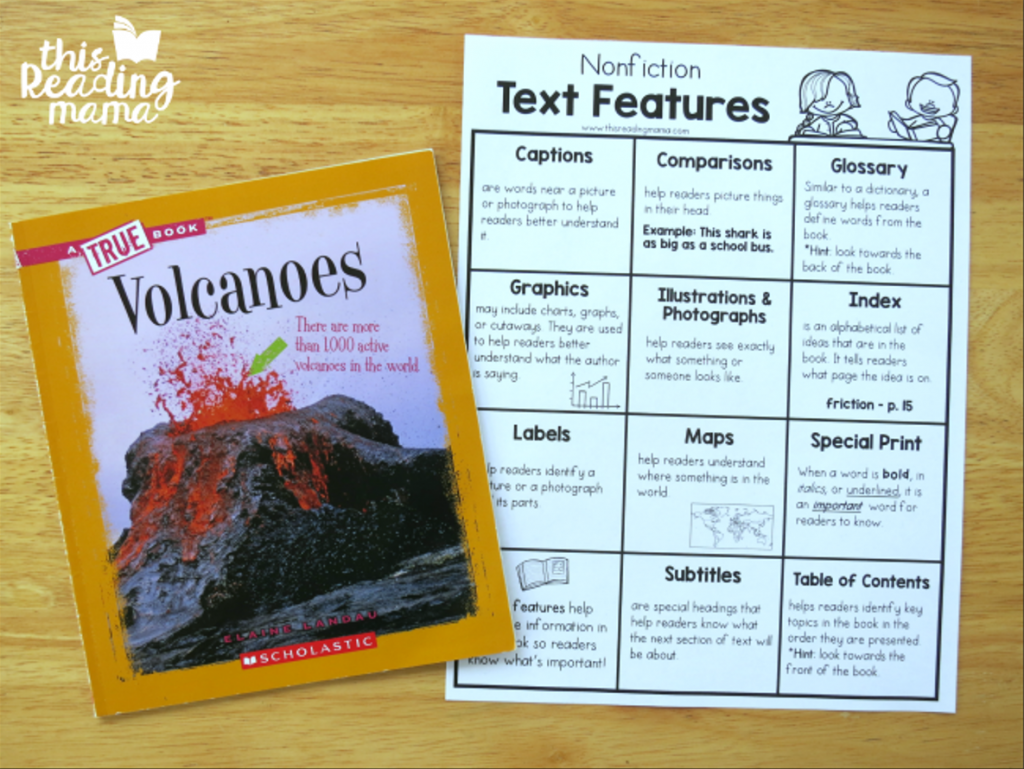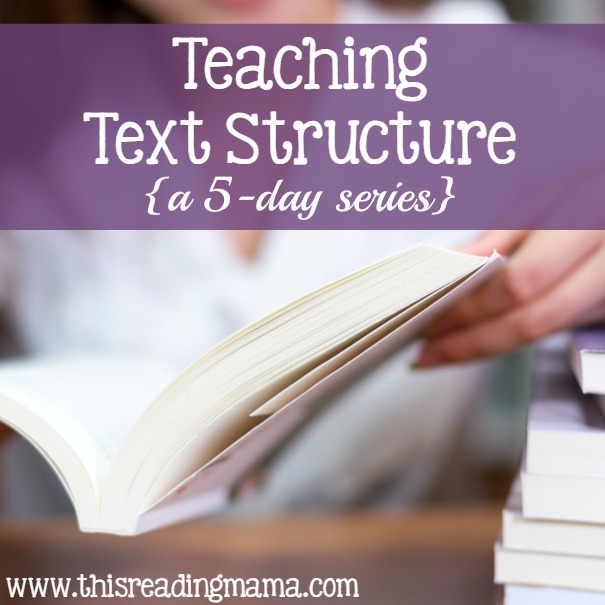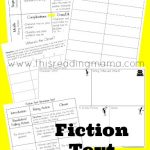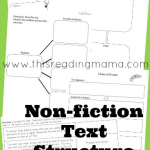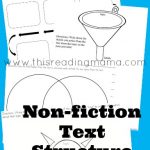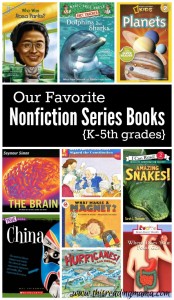*This post contains affiliate links. Please read my full disclosure policy for more information.
What are Text Features?
Text features are to non-fiction what story elements are to fiction. Text features help the reader make sense of what they are reading and are the building blocks for text structure (see below). So what exactly are non-fiction text features?
Text Features and Comprehension
Text features go hand-in-hand with comprehension. If the author wants a reader to understand where a country is in the world, then providing a map helps the reader visualize and understand the importance of that country’s location. If the anatomy of an animal is vitally important to understanding a text, a detailed photograph with labels gives the reader the support he needs to comprehend the text.
Text features also help readers determine what is important to the text and to them. Without a table of contents or an index, readers can spend wasted time flipping through the book to find the information they need. Special print helps draw the attention of the reader to important or key words and phrases.
In my experience, readers of all ages, especially struggling readers tend to skip over many of the text features provided within a text. To help readers understand their importance, take some time before reading to look through the photographs/illustrations, charts, graphs, or maps and talk about what you notice. Make some predictions about what they’ll learn or start a list of questions they have based off of the text features.
Sometimes, it’s even fun to make a point to those readers who like to skip over the text features by retyping the text with no features and asking them to read the text without them first. Once they do that, discuss how difficult comprehension was. Then, give them the original text and help them to see the difference it makes in understanding.
Find our free Nonfiction Text Features Chart!
Some Common Text Features within Non-Fiction
- Captions: Help you better understand a picture or photograph
- Comparisons: These sentences help you to picture something {Example: A whale shark is a little bit bigger than a school bus.}
- Glossary: Helps you define words that are in the book
- Graphics: Charts, graphs, or cutaways are used to help you understand what the author is trying to tell you
- Illustrations/Photographs: Help you to know exactly what something looks like
- Index: This is an alphabetical list of ideas that are in the book. It tells you what page the idea is on.
- Labels: These help you identify a picture or a photograph and its parts
- Maps: help you to understand where places are in the world
- Special Print: When a word is bold, in italics, or underlined, it is an important word for you to know
- Subtitles: These headings help you to know what the next section will be about
- Table of Contents: Helps you identify key topics in the book in the order they are presented
What is Text Structure?
Simply put, text structure is how the author organizes the information within the text.
Why do text structures matter to readers?
- When readers what kind of structure to expect, it helps them connect to and remember what they’ve read better.
- It gives readers clues as to what is most important in the text.
- It helps readers summarize the text. For example, if we’re summarizing a text that has a sequence/time order structure, we want to make sure we summarize in the same structure. (It wouldn’t make sense to tell an autobiography out of order.)
Examples of Non-Fiction Text Structure
While there are differences of opinion on the exact amount and names of different kinds of text structure, these are the 5 main ones I teach.
You can read more about each one on day 3 and day 4 of our Teaching Text Structure to Readers series.
1. Problem/Solution
The author will introduce a problem and tell us how the problem could be fixed. There may be one solution to fix the problem or several different solutions mentioned. Real life example: Advertisements in magazines for products (problem-pain; solution-Tylenol)
2. Cause and Effect
The author describes something that has happened which has had an effect on or caused something else to happen. It could be a good effect or a bad effect. There may be more than one cause and there may also be more than one effect. (Many times, problem/solution and cause and effect seem like “cousins” because they can be together.) Real life example: A newspaper article about a volcano eruption which had an effect on tourism
3. Compare/Contrast
The author’s purpose is to tell you how two things are the same and how they are different by comparing them.Real life example: A bargain hunter writing on her blog about buying store-brand items and how it compares with buying name-brand items.
4. Description/List
Although this is a very common text structure, I think it’s one of the trickiest because the author throws a lot of information at the reader (or lists facts) about a certain subject. It’s up to the reader to determine what he thinks is important and sometimes even interesting enough to remember.Real life example: A soccer coach’s letter describing to parents exactly what kind of cleats to buy for their kids.
5. Time Order/Sequence
Texts are written in an order or timeline format. Real life examples: recipes, directions, events in history
Note: Sometimes the text structure isn’t so easy to distinguish. For example, the structure of the text as a whole may be Description/List (maybe about Crocodilians), but the author may devote a chapter to Compare/Contrast (Alligators vs. Crocodiles). We must be explicit about this with students.
More Text Structure Resources:
- 5 Days of Teaching Text Structure to Readers {contains FREE printable packs for Fiction AND Non-fiction, as seen above}
- Fiction Story Elements and Text Structure
- Teaching Kids How to Retell with Fiction (Fiction Text Structure)
- Teaching Kids How to Summarize
- Our Favorite Nonfiction Series Books, perfect companions for working on text features/structures!
Enjoy teaching!
~Becky

